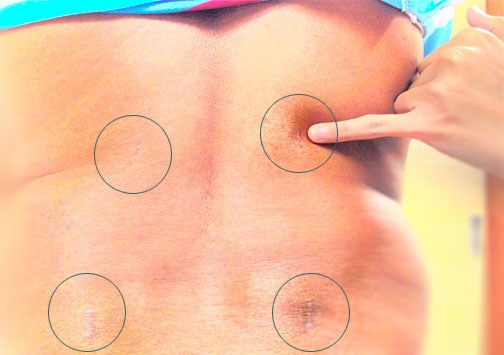A Transforaminal lumbar interbody fusion (TLIF) is a surgical technique that corrects a variety spinal conditions such as disc herniation, degenerative disc disease, and spondylolisthesis. The purpose of the procedure is to stabilize the vertebra to prevent dangerous movement between the bones. When the discs or pads between the vertebra are bulging or deteriorating, back and leg pain can occur as a result of nerve irritation. In essence, the spine is unstable. Fusion surgeries create a solid bone between neighboring vertebra and eliminates abnormal movement between them.
How is a TLIF performed?
The vertebrae are accessed through the foramen or opening that allows the nerves to exit the spinal cord. The damaged disc is partially removed so that a spacer can be inserted into the disc space. A bone graft is then inserted that envelopes the spacer to create a stable disc that results in permanent fusion and stability of the spine. The spine becomes one long bone depending on the number of vertebra affected. The front or anterior part of the spine is fused with the bone graft in the disc space while screws, rods, and bone grafts are used for the posterior aspect of the spine nearest the surface of the back.
The advantages of TLIF over other types of spinal fusion are that both the disc space and lateral aspects of the spine are stabilized. The spacer insertion allows for height to be maintained and it takes pressure off the nerves that come off the spine (roots). Because the approach is on one side and not two, nerves and muscles do not have to be traumatized or moved. Less injury, scarring, and bleeding are the improved outcomes compared to other techniques such as the open technique with a long incision.

Even with great advancements in medical technology, surgery still carries risks, and these will be discussed between you and your surgeon prior to having any spine surgery. Risks can be reduced by following the surgeon’s instructions before and after your surgery, and with the assistance of your personal physician at home.
As with any spine fusion, there is an increased risk of ‘adjacent segment disease’ into the future, which is when a fusion causes stress to the next spine level, sometimes requiring further surgery. Patients concerned with this will often prefer to be assessed for a motion-preserving solution, such as Artificial Disc Replacement (ADR) or Total Facet Joint Replacement, however sometimes a spine fusion is still necessary and required.


